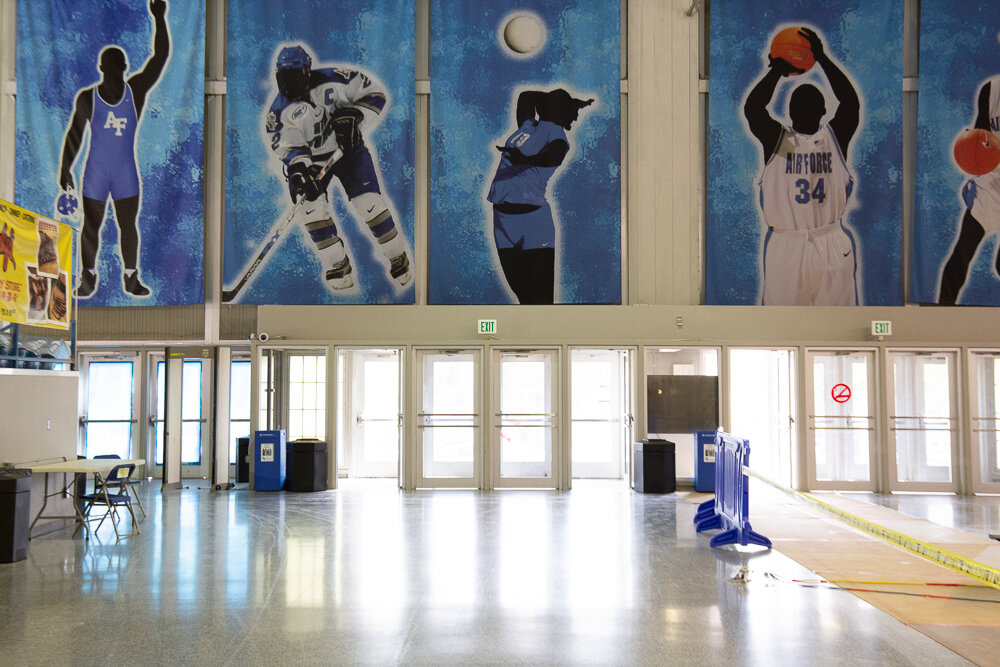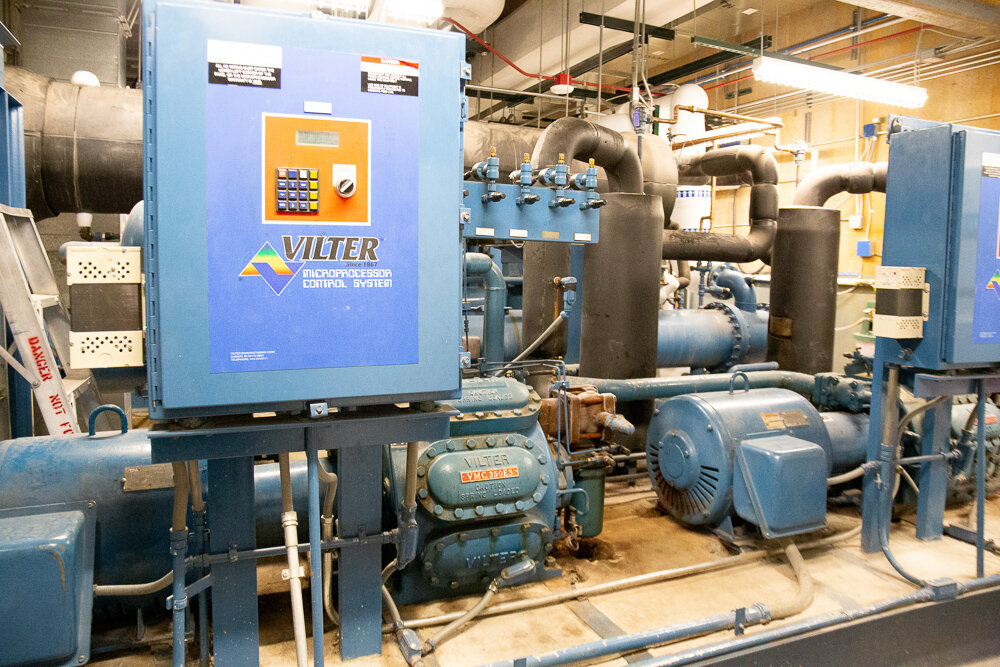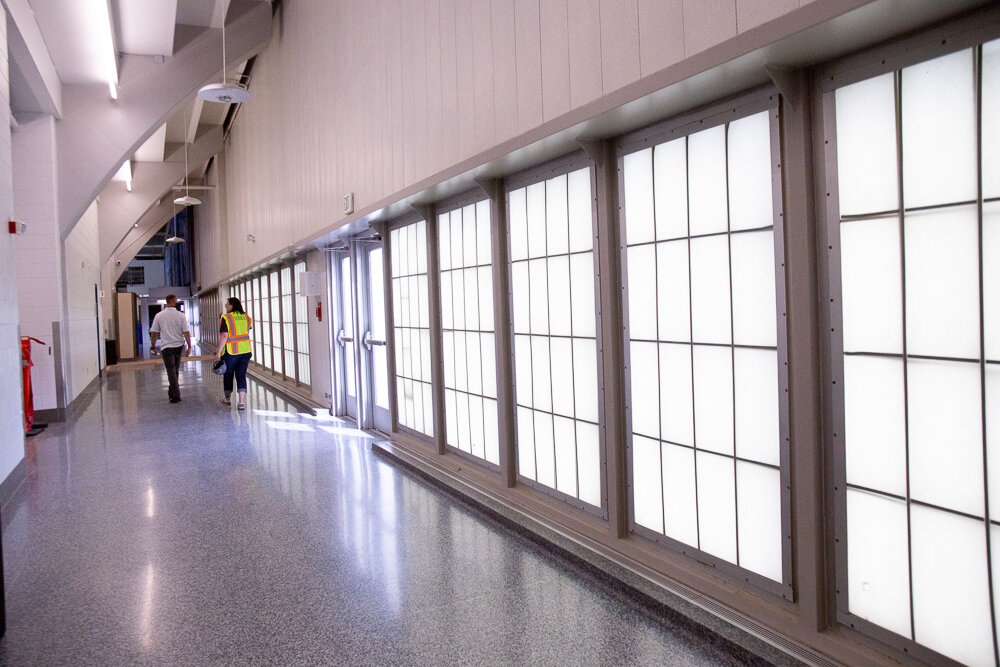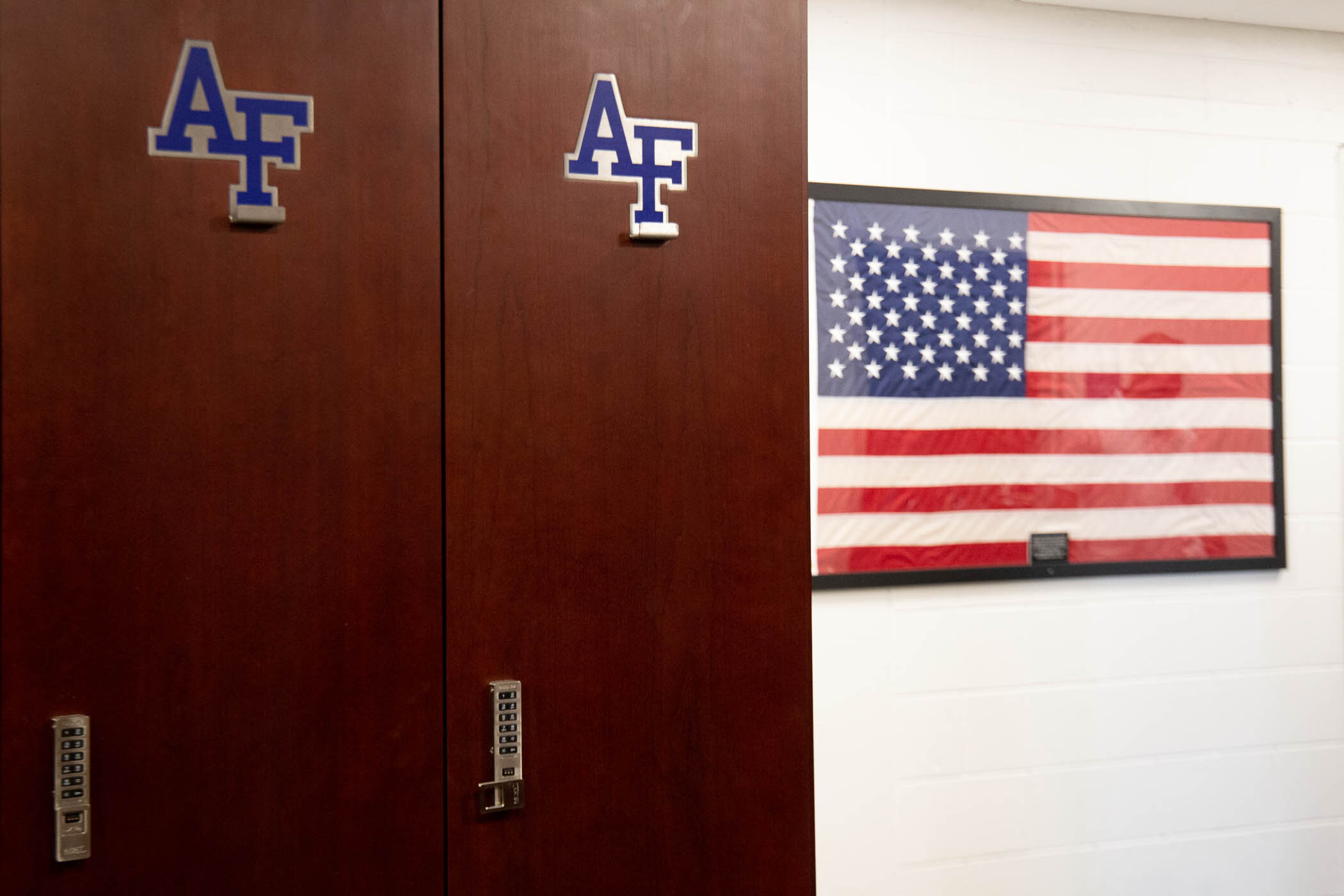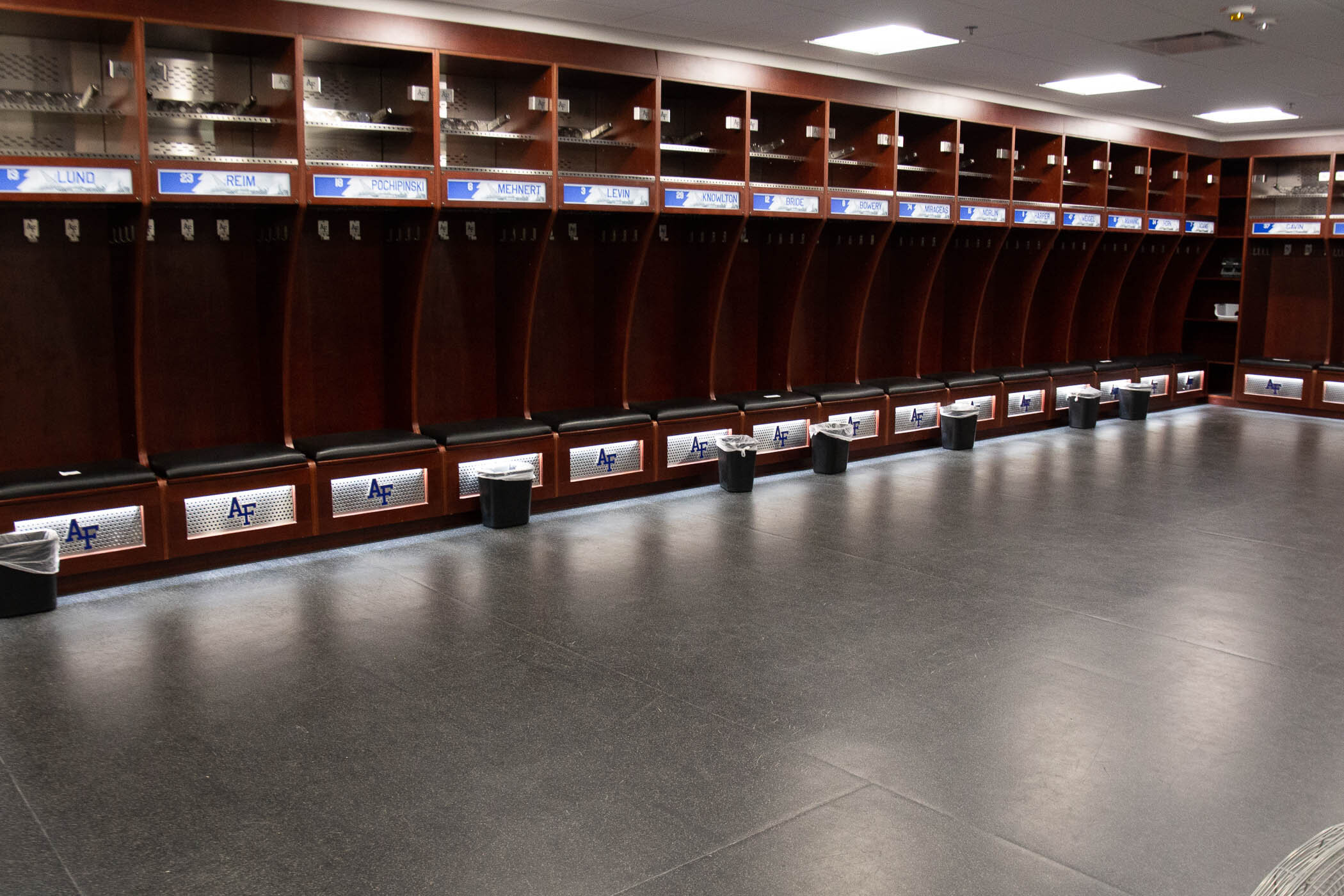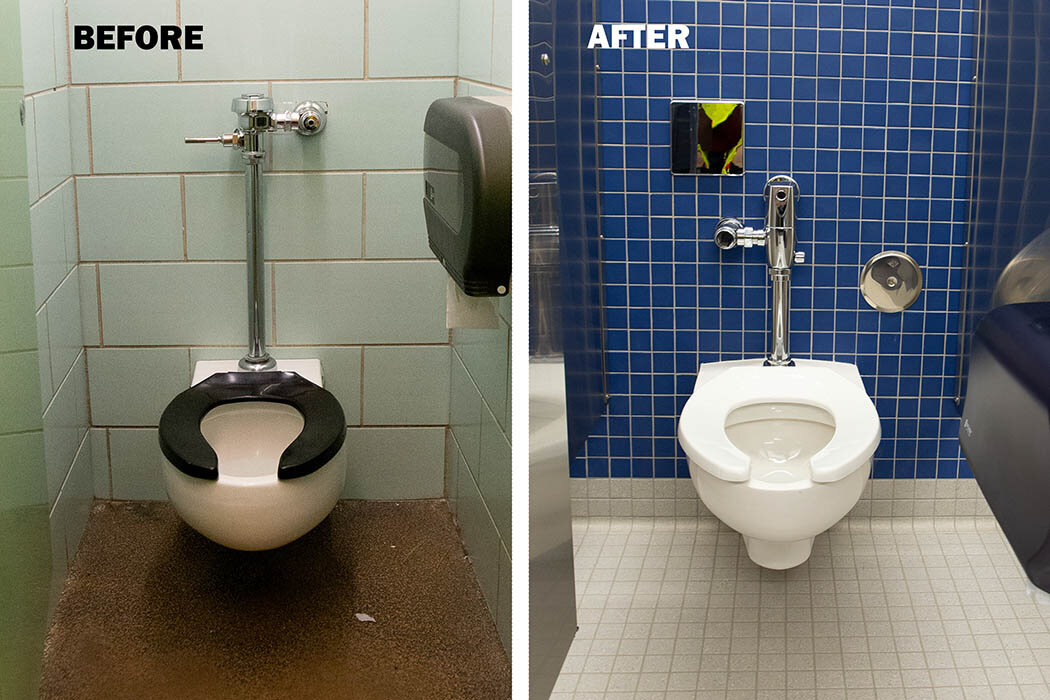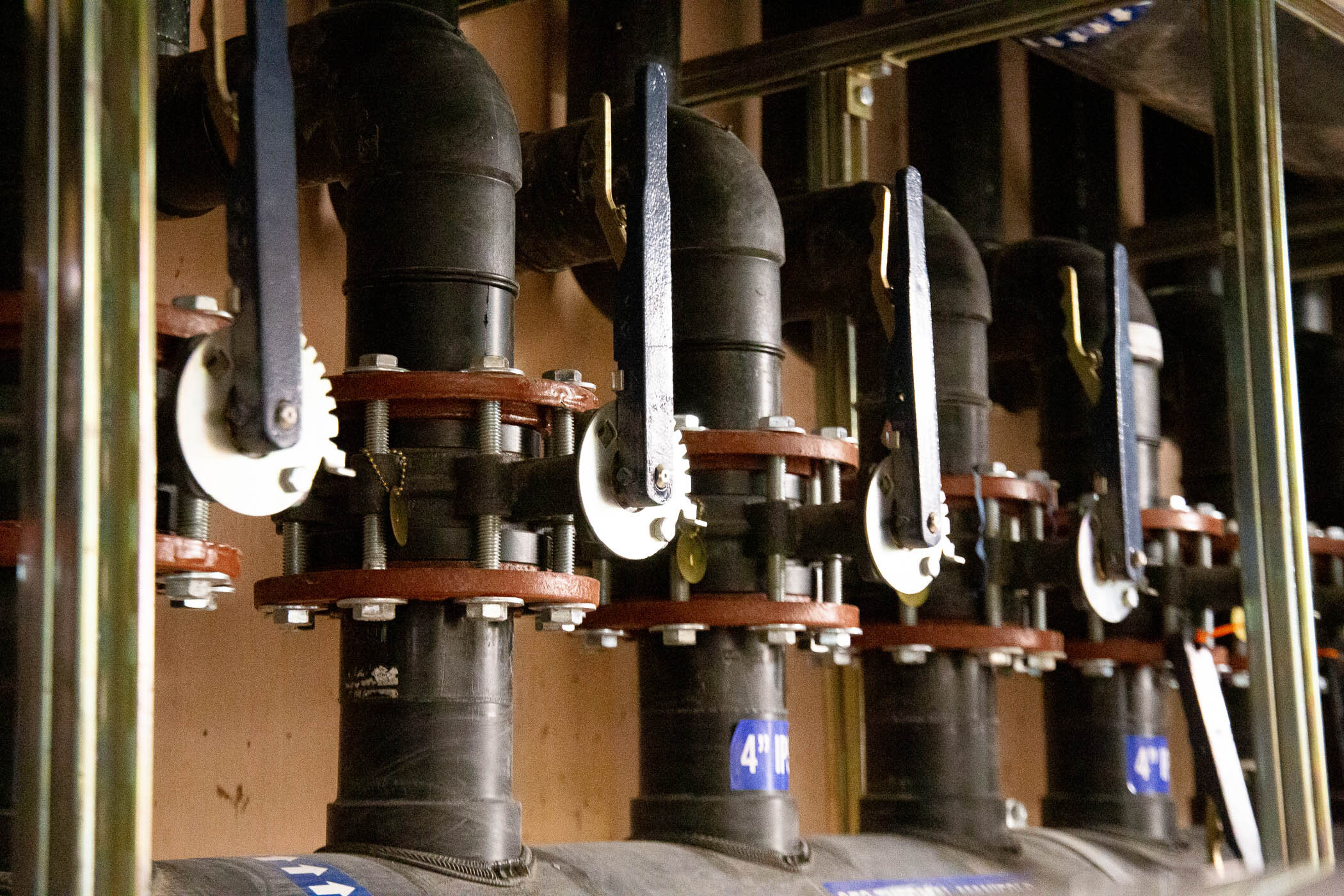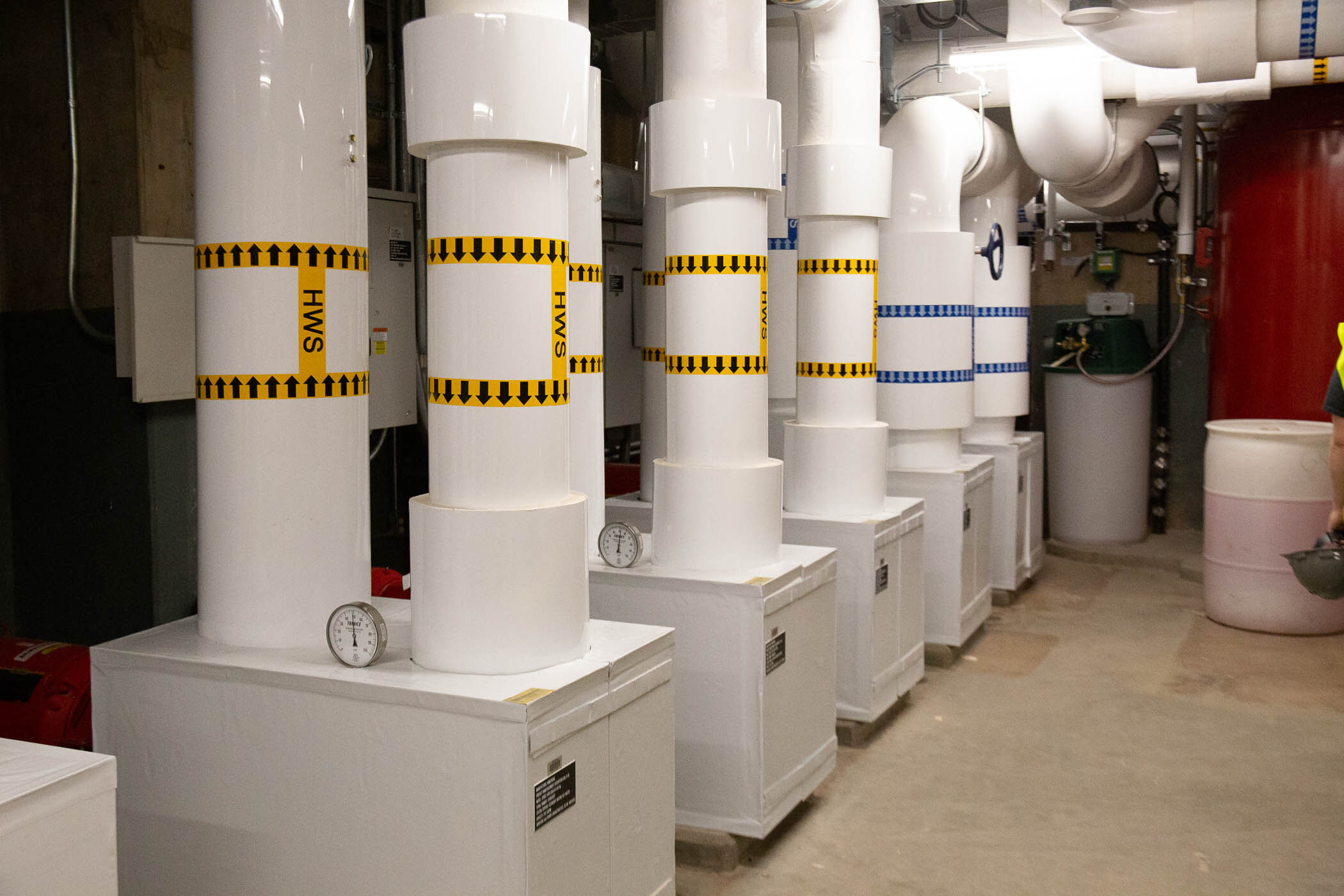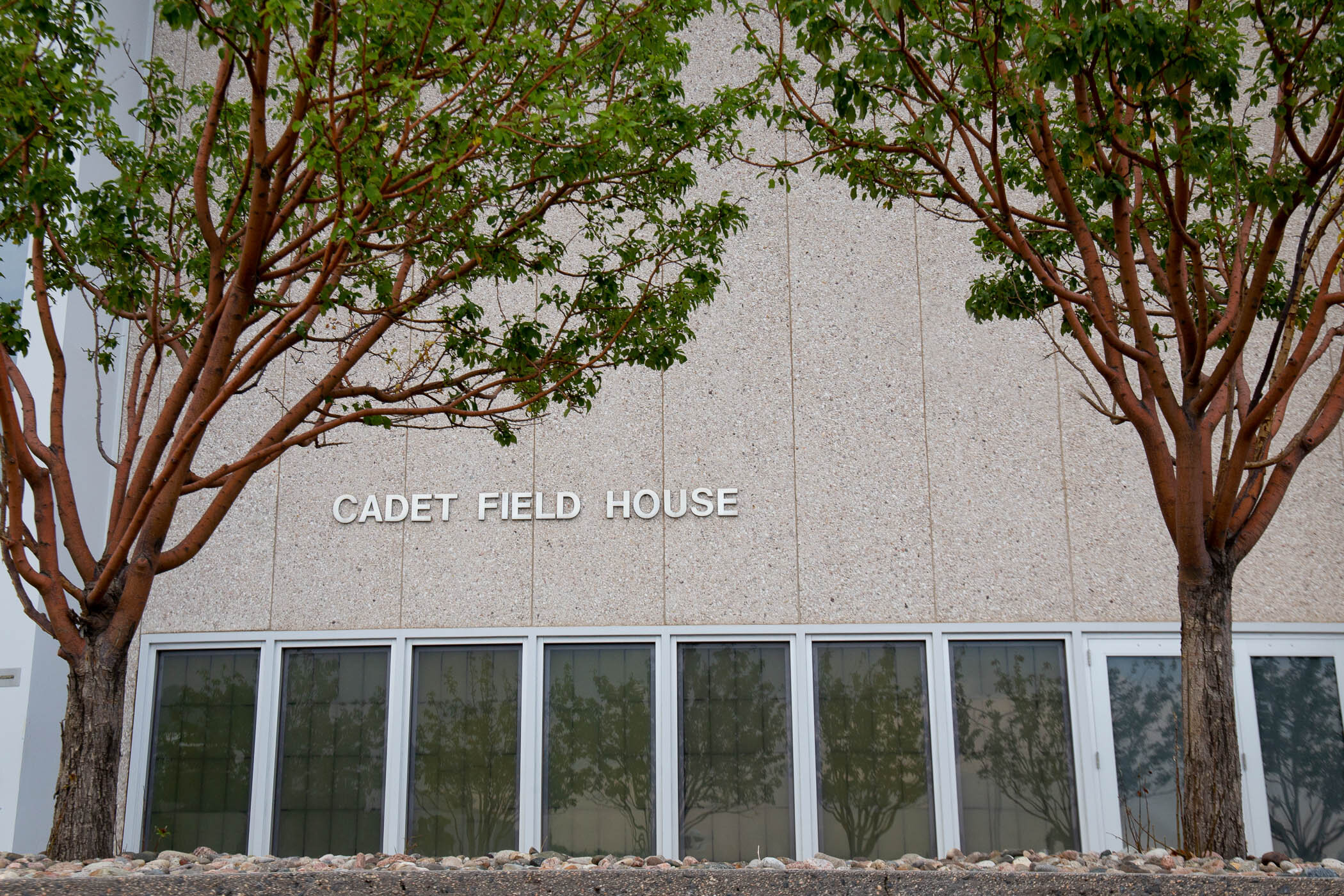The U.S. Cadet Fieldhouse Phase II kicked off in 2017 with a 3-day onsite charrette, followed by design in 2018. Construction for Phase II is slated to begin in 2021. The two most visible changes during this phase will be upgraded glazing on the south façade that maintains the historical look-and-feel of the original building and a new entry vestibule and Ticket Office. Other renovations in Phase II include the men’s and women’s basketball locker rooms, new track locker rooms, an egress corridor on the Participant Level, and completion of the mechanical systems in the other half of the building. See photos of some of the areas that will be updated once construction for Phase II starts in 2021.
